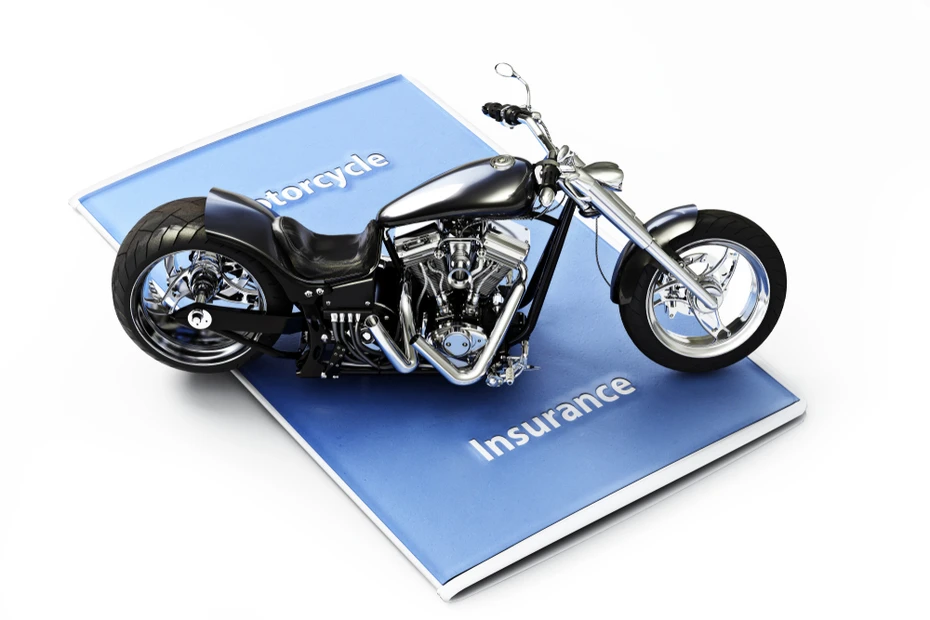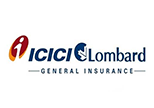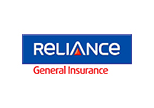

- Save upto 75%*Lowest Bike Premiums
- 11.5 Lakh+Happy Customers
- Claim Support7 days a week
*TP price for less than 75cc two-wheeler. All savings/offers are provided by the Insurers which are subject to modification. Terms and conditions apply
- Car No.
- Select Plan
- Policy Issued
Top Bike Insurance Plans
No Inspection Needed
Immediate Policy Issurance
No Paper work
No Inspection Needed
Immediate Policy Issurance
No Paper work
After purchasing a second hand/used bike, it is important for you to get the two wheeler insurance policy transferred to your name by approaching the bike insurance company within the next 14 days of purchasing the bike. Riding a bike on Indian roads without an active bike insurance policy as per the Motor Tariff Act is illegal, thus it is important for the bike owners to get themselves insured with at least a third party insurance policy.
In contrast to coverage for more recent bikes, insurance for older bikes may have particular restrictions or stipulations because of the age, condition, and decreased market worth of the bike. In order to ensure legal compliance and road safety, bike owners must be aware of these subtleties and select a policy that provides the best coverage for their vintage two-wheeler.
Importance of Used/Second Hand Two Wheeler Insurance
Getting a bike insurance policy for your second-hand/old bike is not just legally mandatory but it also provides a variety of benefits. Highlighted below are the reasons why second-hand bike insurance is necessary:
1. Legal Obligation
While riding on public roads in India, it is important to carry bike insurance according to the Motor Tariff Act. It is one of the legally important documents to be carried alongside a driving license, PUC certificate and Registration certificate of your vehicle.
2. Third Party Liability
This insurance policy safeguards the policyholder from legal liabilities emerging out of loss/damage caused to a third party. It will cover the cost bearable by the policyholder for any loss/damage to a third party property or bodily injury.
3. Theft of Bike
Theft of your second-hand bike could lead you to a state of despair and negatively affect your finances. In case your bike is insured then the insurer is bound to pay you the present market value of the stolen bike. Therefore, safeguarding your two-wheeler with a bike insurance policy is extremely important.
4. Own Damage Coverage
Through a comprehensive cover or standalone own-damage cover, you can make a claim against any kind of loss, theft, or accident of your own bike from the insurance company.
Types of Insurance Plans Available for Used/Second-Hand Bike
When it comes to insuring a used or second-hand bike, owners in India have a variety of insurance options to choose from. These plans not only offer financial protection against various risks but also ensure compliance with legal requirements. Here's a look at the different types of insurance plans available for used bikes:
Third-Party Liability Insurance:
- This is the most basic and legally mandatory type of insurance for all vehicles in India.
- It covers damages or injuries caused by your bike to another person, vehicle, or property.
- It does not cover damage to your own bike.
Comprehensive Insurance:
- A comprehensive policy provides broader coverage, including third-party liability and damage to your own bike.
- It covers a wide range of risks such as theft, natural disasters, accidents, and vandalism.
- Policyholders can also claim for damages due to fire, riots, and terrorist activities.
Standalone Own-Damage Insurance:
- This policy covers damages to your own bike but does not include third-party liability.
- It's suitable for those who already have a third-party liability policy but want additional coverage for their bike.
Add-ons Available for Used/Second Hand Bike Insurance
While standard bike insurance policies offer substantial coverage, opting for specific add-ons can significantly enhance the protection of your used or second-hand bike. These add-ons cater to specific needs, offering more comprehensive coverage. Here are some popular add-ons that you can consider:
Zero Depreciation Cover:
- Commonly known as ‘zero dep’ cover, it ensures that in case of a claim, the depreciation value of bike parts is not deducted from the claim amount.
- Especially beneficial for higher-end bikes where the cost of parts replacement can be substantial.
Engine and Gear Box Protection Cover:
- This add-on covers the cost of repairing or replacing the engine and gearbox parts in case of damage due to water ingress or oil leakage.
- A must-have in areas prone to waterlogging.
Roadside Assistance Cover:
- Offers assistance in case of breakdowns, including services like emergency towing, battery jumpstart, flat tire change, and even fuel delivery.
- Invaluable for riders who frequently go on long trips or use their bike extensively.
NCB (No Claim Bonus) Protection:
- Protects your NCB even after making a claim. This means you can still avail of the NCB discount on your premium during renewal.
- Beneficial for those who have accumulated a high NCB percentage.
Return to Invoice Cover:
- In case of total loss or theft of the bike, this add-on ensures that you receive the full ex-showroom price of the bike, not just the Insured Declared Value (IDV).
- Ideal for relatively new, expensive bikes.
Consumable Cover:
- Covers the cost of consumables like nuts, bolts, screws, washers, grease, lubricants, etc., which are not typically covered under a standard policy.
- Useful for older bikes where such costs can add up during repairs.
Personal Accident Cover for Passengers:
- Extends the personal accident cover to include the pillion rider.
- Provides financial protection in case of injury or death of the pillion rider due to an accident.
Key Replacement Cover:
- Covers the cost of replacing your bike's keys in case they are lost or stolen.
- A convenient add-on for modern bikes with expensive key systems.
Each of these add-ons incurs an additional premium but can significantly increase the scope of coverage, offering peace of mind and financial protection against specific risks associated with used or second-hand bikes.
Insurance Scenarios When You Buy A Second hand/Used Bike
At the time of buying a second-hand bike, generally, two scenarios arise:
- CASE 1: Need to Purchase a New Insurance Policy
- CASE 2: Existing Insurance Policy
Let us understand what is to be done when the above-mentioned situations arise:
CASE 1: Need to Purchase a New Insurance Policy
In case you are not satisfied with your existing bike insurance policy coverage/premium or if the policy has expired, you can get a new bike insurance policy for your two-wheeler. To buy a new insurance policy, you can follow the below given steps:
Step 1: Visit InsuranceDekho and enter your bike’s registration number.
Step 2: Click on ‘Get Your Quote’.
Step 3: Fill in the required details like your bike’s brand, model, etc.
Step 4: Enter your personal details such as name, mobile number, etc and click on ‘Submit to get quotes’.
Step 5: Select the best plan depending upon your coverage and budget requirement. Also, to extend your coverage, you can choose to add on covers like zero depreciation, key loss cover etc.
Step 6: Do the payment and your second-hand bike insurance policy will get issued to you within some time.
Case 2: Existing Insurance Policy
If you are buying a second-hand car with already existing insurance, then it is needed that you get the insurance policy for your second-hand bike transferred to your name. Most second-hand bikes required bike insurance policy renewal within some time. When such scenarios arise, it is important for the bike owner to get their policy transferred within 2 weeks' time to their name.
Documents Required to Buy Used/Second Hand Two Wheeler Insurance
When purchasing insurance for a used or second-hand two-wheeler in India, certain documents are essential to complete the process smoothly. These documents help in verifying the ownership and condition of the bike, and are crucial for the insurer to assess the risk and determine the policy terms. Here is a list of the key documents you will need:
Registration Certificate (RC) of the Two Wheeler:
The RC is a mandatory document that proves your ownership of the bike. It contains crucial details like the bike’s registration number, make and model, engine number, chassis number, and the name of the owner.
Previous Insurance Policy (if applicable):
If the bike was previously insured, the details of the last insurance policy are needed. This includes the policy number and the name of the insurance company.
No Claim Bonus (NCB) Certificate (if applicable):
If you are transferring the insurance from another bike or if the previous owner had an NCB, the certificate or details of the NCB should be provided.
Valid Bike Fitness Certificate:
For older bikes, a fitness certificate issued by the RTO (Regional Transport Office) may be required to ensure the bike is in good working condition.
Pollution Under Control (PUC) Certificate:
A valid PUC certificate is mandatory and indicates that the bike meets emission standards.
Identity Proof of the Buyer:
Standard KYC documents like Aadhaar card, PAN card, or driving license to verify the identity of the buyer.
Address Proof of the Buyer:
Documents like utility bills, Aadhaar card, or bank statements that verify the current residential address of the buyer.
Passport Size Photographs:
Some insurers may require recent passport size photographs of the buyer.
Sale Deed/Form 29 & 30 (if recently purchased):
In case the bike has been recently purchased, the sale deed or the RTO transfer forms (Form 29 and Form 30) are required.
Inspection Report (if required):
If the previous insurance has expired, an inspection report by the insurance company may be necessary before issuing the policy.
Having these documents ready can expedite the process of purchasing insurance for your used two-wheeler and ensure that you get the coverage you need without any hassle.
How to Renew Used/Second Hand Two Wheeler Insurance?
Renewing insurance for a used or second-hand two-wheeler is a straightforward process that ensures continued protection against liabilities and damages. Whether you're renewing an existing policy or switching to a new insurer, here's how you can do it:
Review Your Current Policy:
Before renewal, assess your current policy. Check if the coverage is adequate or if you need to make any adjustments based on your current needs, like adding or removing add-ons.
Choose Between Online and Offline Renewal:
Online: Most insurers offer an easy online renewal process. Visit the insurer’s website, enter your policy details, and follow the prompts to renew.
Offline: You can also renew your policy by visiting the insurer's office, contacting an agent, or through customer service.
No Claim Bonus (NCB) Transfer:
If you are eligible for NCB and are changing insurers, ensure that the NCB is transferred to your new policy to avail of the discount.
Documentation:
- Have your existing policy document, RC (Registration Certificate) of the bike, and any other required documents handy.
- If there is a break in the insurance (policy has lapsed), you might need to have the bike inspected before the policy can be renewed.
Payment of Premium:
- Once you have filled in the required details and chosen any additional covers, proceed to pay the premium.
- Online payment can be made via debit/credit card, net banking, or digital wallets. Offline payments can be made by cheque or cash.
Policy Document:
After successful payment, you will receive a soft copy of the policy document via email if done online. In the case of offline renewal, a hard copy will be provided.
Check Policy Details:
Once you receive the renewed policy, verify all details, including the policy number, personal details, bike details, policy duration, coverage, and add-ons.
Stay Informed about Expiry:
Keep track of the policy expiry date to ensure timely renewal in the future. Setting reminders a few weeks before the expiry can be helpful.
Renewing your used two-wheeler insurance on time is crucial to enjoy uninterrupted coverage and comply with legal requirements. It’s always advisable to start the renewal process well before the expiry date to avoid any last-minute hassles.
Old Bike Depreciation Rate
An insurer's current market value (also known as the insured declared value) of a bike is calculated with depreciation taken into account. A bike's value declines with age because of wear and tear. This is a general table that illustrates how much a bike will depreciate depending on its age:
|
Age of the Bike |
Rate of Depreciation |
|
Less than 6 months |
5% |
|
6 months - 1 year |
15% |
|
1 year - 2 years |
20% |
|
2 years - 3 years |
30% |
|
3 years - 4 years |
40% |
|
4 years - 5 years |
50% |
|
More than 5 years |
To be decided by the insurer after assessing the bike's condition |
How to Use Bike Insurance Premium Calculator for Old Bikes?
An effective tool for calculating the premium for your previous bike insurance is a bike insurance calculator. Here's how to put it to use:
- Visit the website: To utilise the calculator, go to the insurance company's website or go to an independent insurance comparison website like InsuranceDekho. Both offer bike insurance calculators.
- Fill in the Bike Details: Enter pertinent information about your bike, including the model, the year it was purchased, and the status of its registration.
- Input information from your prior insurance policy, such as any claims filed within the last year and the No Claim Bonus (NCB) accumulated, if you're renewing your coverage.
- Select a Coverage: Choose the kind of insurance you want: comprehensive or third-party. Incorporate any extra riders or benefits that you would like to have in your policy as well.
- Get Estimate: The calculator will produce an estimated premium amount based on the inputs when you enter the details. This can help you estimate the possible cost of insurance for your vintage bike.
- Compare Policies: You can select the best policy for your needs by comparing the features and premiums of several policies using certain platforms.
- Complete and Buy: After comparing and selecting an insurance plan, you may buy it online. Make sure you go over all the information and inclusions before committing.
Keep in mind that although the bike insurance calculator offers an estimate, the final premium may differ significantly depending on additional variables and the insurer's underwriting guidelines.
Calculate Your Bike Insurance Price Online
Select your bike brand

- Honda
- Hero
- TVS
- Hero Honda
- Bajaj
Which city is your bike registered in?
- New Delhi
- Bangalore
- Mumbai
- Chennai

When did you buy your bike?

How to Transfer Bike Insurance Policy from One Person to Another?
To transfer the ownership of your existing bike insurance policy, you can look at the steps that are given below:
- Begin by visiting the RTO office alongside the previous owner, then fill form 29 and file a request application mentioning the reason for the transfer of ownership.
- Provide the bike insurance copy which is self-attested.
- Afterward, you are required to fill form 30 and submit to the Regional Transport Office.
- Now, submit the self-attested photocopy of your address proof and a PUC certificate.
- Alongside other documents, you are required to provide an attested copy of PAN/Form 60/Form 61.
- At last, deposit the fee as applicable.
The entire process would take around 10-15 days. Therefore, meanwhile, you can ensure about the bike insurance policy and whether you wish to continue with an existing policy or want to buy a new insurance policy.
Things to Remember Before Buying a Used/Second Hand Bike Insurance
While insuring a second-hand bike, you should be aware of a few below given aspects:
- Ensure that the RC of the bike is transferred to your name.
- With high coverage and a low premium amount, maximum coverage will be provided to your second-hand bike.
- Make sure you check the Insured declared value of your second-hand bike, it is an estimate of the present market value of your vehicle. In case of total damage/loss to your bike, this is the sum insured that would be paid.
- You can also expand your bike insurance coverage with various add ons available like zero depreciation cover, NCB, invoice protection, etc.
- If you wish to change your insurance company, then do before-hand research about the services offered, their performance, etc before you choose the optimum insurance coverage for your second-hand bike.
Used Bike Insurance FAQ
-
-
-
-
Do You Need an Own-Damage Cover for a Second-Hand Two-Wheeler?
An own-damage cover, unlike the third party insurance policy, is not compulsory. However, without it, you will not have protection against damages to your car in case of a mishap, natural calamity or theft. Keep in mind, the compensation you receive for an own-damage claim will be subject to depreciation rate.
-
What is the Process of Renewing Bike Insurance?
The following steps will help you renew an existing bike insurance policy:
- Step 1: Visit your insurance provider’s website.
- Step 2: Enter the required details such as the existing policy particulars, registration number of the two-wheeler etc.
- Step 3: The renewal amount will be mentioned and you will have to make the payment through one of the available payment methods.
- Step 4: After the payment process is completed, the new policy document will be sent to your registered email ID.


















































